Turkmen are a Turkic people living throughout Eurasia and Central Asia. There are an estimated 8 million Turkmens worldwide, but the largest population of Turkmens (about 5 million) lives in Turkmenistan, a resource-rich country in southwestern Central Asia situated between Iran, Afghanistan, Uzbekistan, Kazakhstan and the Caspian Sea. Additionally significant populations of Turkmen people live in Iran, Afghanistan, Pakistan, Russia, and the Ukraine.
Who Are the Turkmen and Where Do They Live?
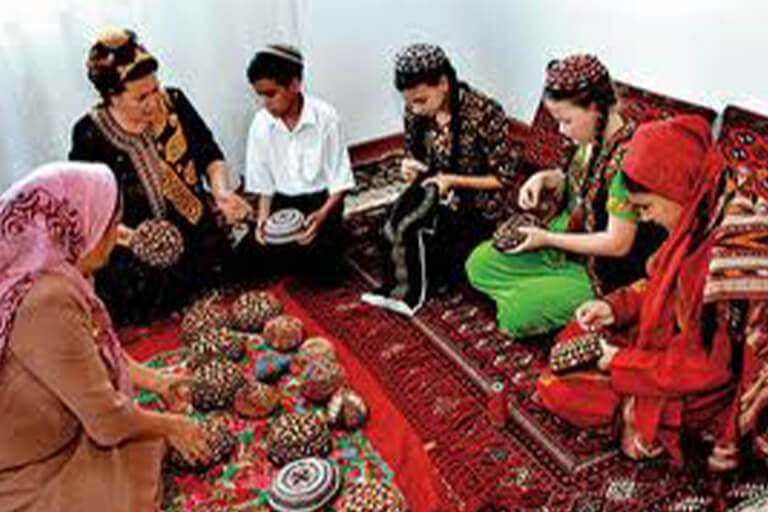
What Kind of Language is Turkmen?
Turkmen belongs to the West Oghuz branch of the Turkic language family, which includes languages such as Turkish, Azerbaijani, Kazakh, Kyrgyz, and Uzbek. In fact, Turkmen is so similar to Turkish and Azerbaijani that many scholars consider these languages to be mutually intelligible.
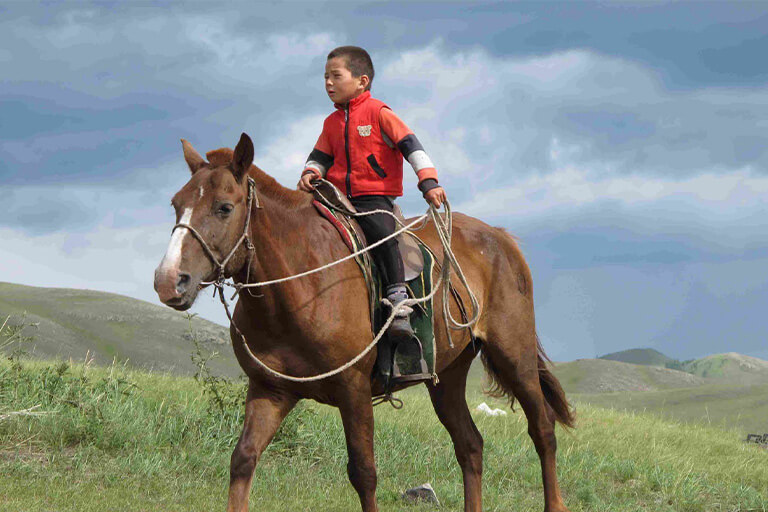
Turkmen in Turkmenistan is spoken in several dialects throughout its provinces, including the Teke, Yomut, Arsari, Salyr, and Saryk dialects. Additionally, some major Turkmen dialects from other countries include Yomut (spoken in Iran, Russia, Afghanistan, and Iraq) and Arsari (spoken in Afghanistan).
Like many other Turkic languages, Turkmen has vowel harmony (vowels of the suffixes change to fit the other vowels in the stem) and is an agglutinative language, where each suffix added to the stem indicates only one meaning; these suffixes attach to the word stem one after another in a set order.
Turkmen vocabulary has been influenced by Arabic, Persian, and Russian. However, after the collapse of the Soviet-Union, many Russian loanwords in Turkmen have been replaced with new Turkmen ones.
What Alphabet Do Turkmens Use?
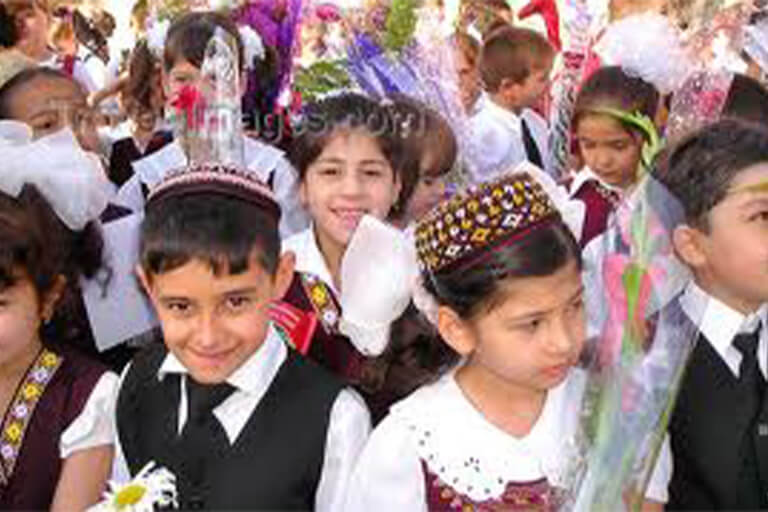
Similar to other Central Asian Turkic languages, Turkmen has been written in a number of alphabets. Textual remains of early Turkic varieties from in and around Turkmenistan are attested in a variety of scripts, including the Old Turkic runic alphabet and others. Before 1929, Turkmens used the Perso-Arabic script to write their language. Then for a short time between 1929 and 1938, they adopted a Latin script before switching to a Cyrillic script under Soviet Rule, which they used until the 1990s when the Latin script was reintroduced. Today Turkmen people who live in Turkmenistan and in other post-Soviet states use a modified Latin script, Täze Elipbiý, however those who live in Iran and Afghanistan use the Arabic script.
What is Turkmen Culture Like?
Throughout its history, the territory of what is now Turkmenistan, has been part of the Persian, Greek, Arab, Mongol, Russian, and Soviet empires, thus the local people and their traditions have been influenced for millennia by cultures and civilizations from Greece to China, and from Middle East to Siberia.
In the 8th century, due to Arab influences, much of Turkmenistan converted to Islam. Today, majority of Turkmens identify themselves as Sunni Muslims. However, due to its Soviet past, Turkmen society is relatively secular.
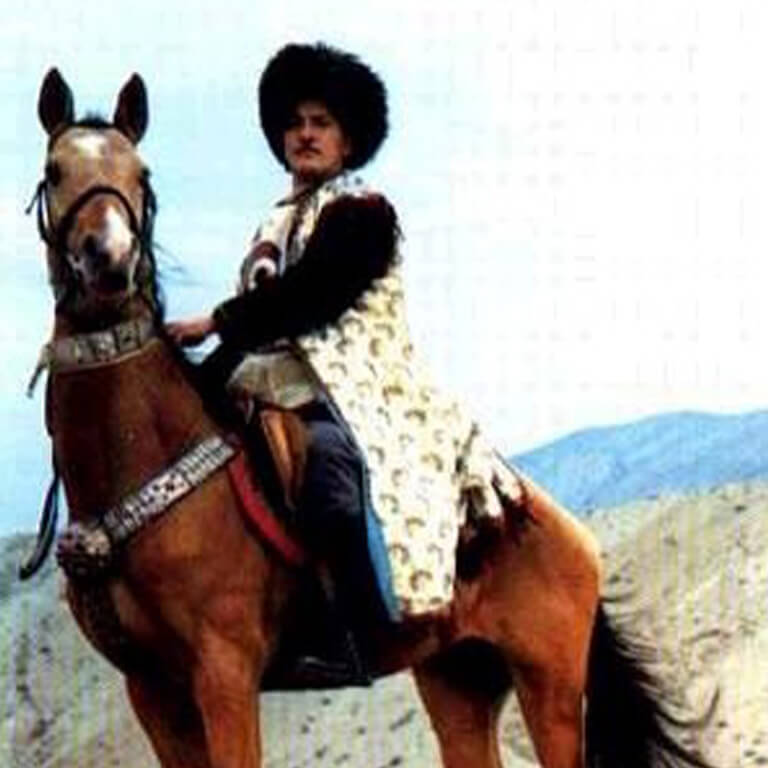
Traditionally, Turkmen are a nomadic people known for their horsemanship. The Turkmen horse, Akhal-Teke, was bred for war and raiding and is considered to be one the oldest surviving horse breeds. Amazingly resilient and tough, they became part of Turkic oral epics, legends and myths. It is said that the Chinese called them Heavenly Horses and waged wars just to acquire a few. In fact, some say owning such a horse was the dream of every noble Greek and Roman. Today, the Akhal-Teke breed is Turkmenistan’s national emblem and a source of cultural pride for the Turkmen people.
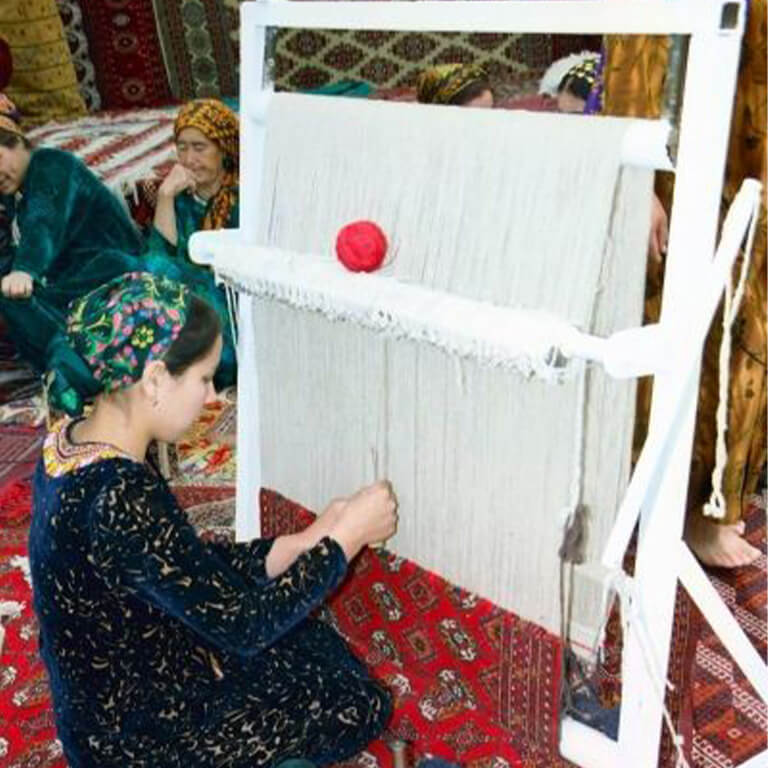
Carpet-weaving is an important traditional Turkmen art form. Turkmen carpets and rugs are usually made of sheep or camel wool and are known for their rich colors, high quality, and durability. But it is the unique styles of patterns designed and produced by each tribe that really make these rugs stand out. Perhaps the most famous of these is the Bukhara style woven by the Tekke tribe.
Like many other Central Asian peoples, Turkmen are a very family and community oriented society, and individuals are commonly identified with reference to their family and lineage. It is not surprising to see two or three generations living under the same roof. Furthermore family elders are highly respected and consulted for all important decisions.
Some Useful Phrases in Turkmen
Salam. Meniň adym Jon.
[θaˈlaːm mɛˈniŋ aˈdɨm ʤan] /Thalaam. Mĕnĭng adĭm Jōn./
Hi. My name is John.
Siziň adyňyz näme?
[θiˈðiŋ ˈadɨˌŋɨð ˈnæmɛ] /Thĭthĭng adĭngĭth nămĕ?/
What is your name?
Ýagdaýlaryňyz gowumy?
[ˌjaɣdaɪˈlarɨŋɨð goˈwumy] /Yagdīlarĭngĭth gōwūmĭ?/
How are you doing?
Siz nireden? Men Indianadan.
[θið ˈnirɛˌdɛn mɛn ˌindiˈanadan] /Thĭth nĭrĕdĕn? Mĕn ĭndĭanadan/
Where are you from? I am from Indiana.
Sizden haýyş, maňa kömek ediň!
[θiðˈdɛn haɪˈɨʃ maˈŋa køˈmɛk ɛˈdiŋ]
/Thĭthdĕn khī-ĭsh, manga kōmĕk edĭng!/
Please help me!
Hajathana nirede?
[χaˈʤat•haˌna ˈnirɛˌdɛ] /Hajat-hana nĭrĕdĕ?/
Where is the bathroom?
Bagyºlaò!
[ˈbaɣɨʃˌlaŋ] /Bagĭshlang!/
Excuse me.
Köp sag boluň!
[køp θaɣ boˈluŋ] /Kōp thag bōlūng!/
Thank you very much!
Hoş, sag boluň!
[χoʃ θaɣ boˈluŋ] /Hōsh thag bōlūng!/
Good-bye!
Five Reasons Why You Should Learn More About Turkmens and Their Language
- Turkmen is spoken natively by about 7 million people worldwide, with approximately 1 million more speaking it as a second language. The majority of Turkmen speakers are located in Eurasia and Central Asia, with the highest concentrations located in Turkmenistan, Iran, and Afghanistan.
- A member of the West Oghuz branch of the Turkic language family, Turkmen shares many structural features with other Turkic languages, such as SOV word order, vowel harmony, and agglutinative structure.
- Because of its similarity to other Turkic languages, studying Turkmen can actually help you learn Turkish, Azerbaijani, Kazakh, Kyrgyz, and Uzbek!
- Turkmenistan possesses the world’s fourth largest reserves of natural gas and substantial oil resources, and is therefore a most prominent trade partner with the United States. As business partnerships with Turkmenistan and the USA grow, this creates a demand for Americans who are fluent in Turkmen.
- Turkmenistan is a region of numerous archeological sites of great interest. The Turkmen cities of Nisa, Anau, and Merv have been declared as World Heritage Sites by UNESCO and were once part of the ancient Bronze Age Bactria-Margian Archeological Complex and later the Scythian, Greek, Persian, and Arab empires.

